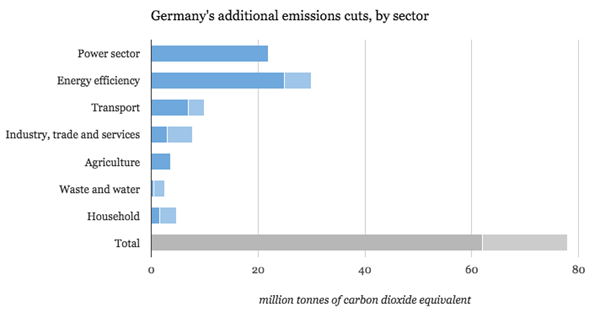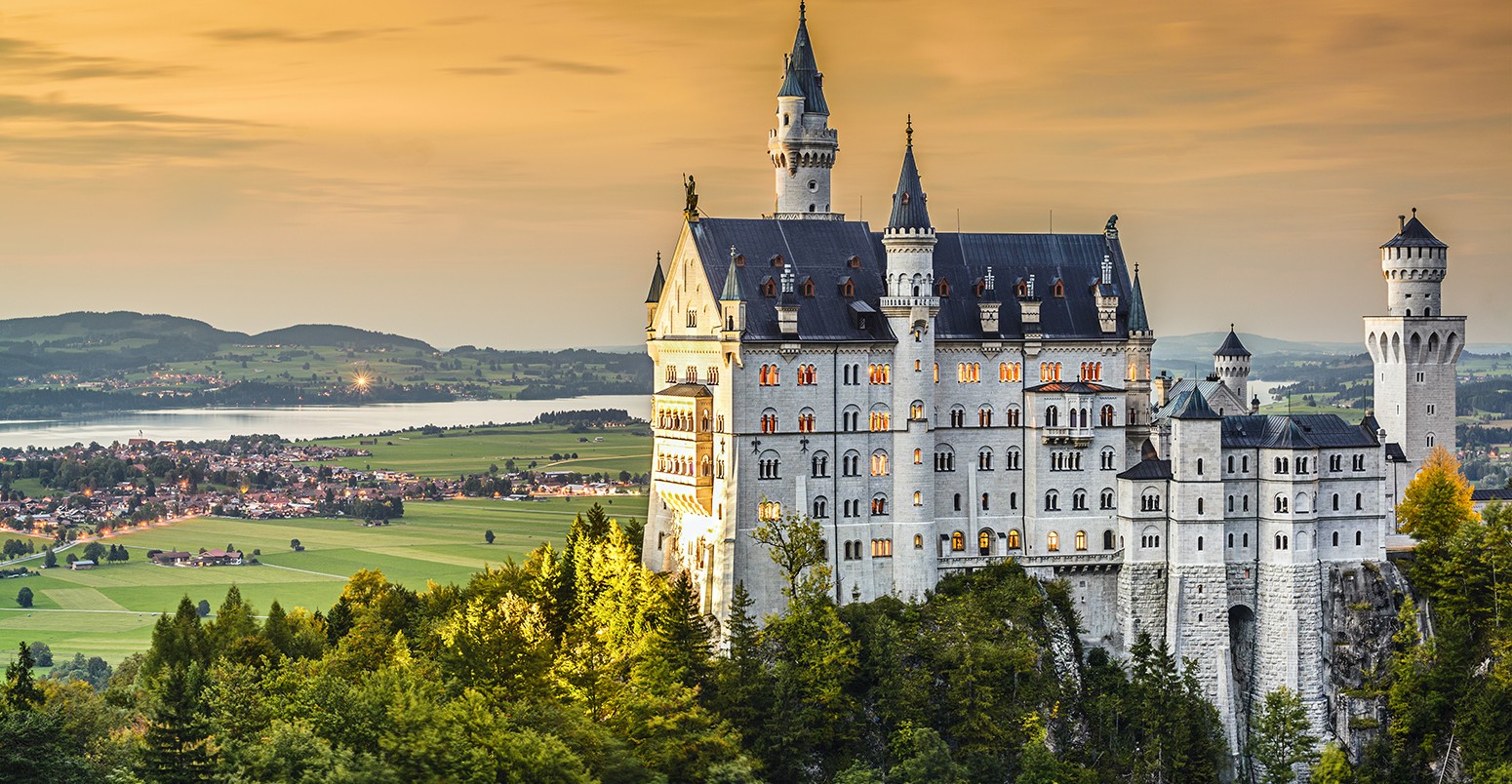Germany has implemented a series of ambitious polcies to decarbonise its economy. But despite significant investment in renewable energy, the country’s emissions have been rising for the last three years. Yesterday, the government announced new measures to get the country back on track.
We take a look at Germany’s new climate action plan, and what it means for the country’s long term decarbonisation prospects.
Closing the ‘climate gap’
In 2010, Germany announced ambitious plans to decarbonise its energy sector and cut emissions. The plan has become known as the ‘energy transition’, or Energiewende.
At the heart of the Energiewende is a goal to cut emissions 40 per cent by 2020, compared to 1990 levels. The target is considerably more ambitious than the EU’s goal to cut emissions 20 per cent by 2020. Germany also aims to cut emissions at least 80 per cent by 2050.
The problem is, Germany’s emissions have been increasing for the last three years. Germany’s government acknowledged that if emissions continued to rise, the country would miss its 2020 target by five to eight per cent.
There were rumours that Germany may abandon its 2020 emissions target. But yesterday’s announcement shows the country is still committed to the Energiewende.
The government’s new climate action plan seeks to cut the equivalent of an additional 62 to 78 million tonnes of carbon dioxide by 2020. That’s the equivalent of cutting Germany’s current emissions by about an extra two per cent over the next five years.
The climate action plan
Germany’s environment minister, Barbara Hendricks, is bullish about the new climate action plan. She says it shows Germany doesn’t just set goals, it also finds a way to stick to them.
This chart shows how the plan intends to cut emissions. Each sector has a minimum and maximum emissions reduction goal (the dark and light shades):

Source: Clean Energy Wire. Graph by Carbon Brief.
Most of the emissions cuts are expected to come from the energy sector.
The most high profile part of the new climate action plan is a pledge to cut emissions from electricity generation by 22 million tonnes between 2016 and 2020.
To do this, the government says it will set an overall cap on the power sector’s emissions. The cap will be 22 million tonnes, or 4.4 million tonnes each year, less than it currently expects power stations to emit. It’s not yet clear how the government will calculate the cap’s level, however. The government is also yet to announce whether the scheme will apply to all power stations, or just those burning the most polluting fuel, coal.
Once the cap is set, companies will be allocated allowances based on how much they currently emit. If they cut their emissions by more than their number of allowances, they may be able to sell the permits to companies wanting to emit more.
So it looks like Germany may be about to implement its own carbon market, working in a similar way to the EU’s struggling scheme.
It’s been reported that the emissions cut as a consequence of the scheme would be the equivalent of closing around eight coal power stations. But it’s unlikely any power plants will actually close.
Instead, most companies will reduce the amount of power their plants generate, meaning they will burn less coal, and emissions will fall.
The energy minister, Sigmar Gabriel, prefers this scheme to one like the UK’s capacity market, which pays power plants to stay open in case the grid needs a power boost. Germany’s plan is a less expensive option which represents better value for consumers, he says.
The power sector plan is the most complicated of the new policies. The other parts of the climate action plan are, at least on the face of it, a simpler proposition.
Germany plans to cut an additional 25 to 30 million tonnes of emissions through energy efficiency measures. It plans to offer â?¬1 billion tax breaks for retrofitting buildings, and an additional 200 million low interest loans to install energy saving measures.
It also plans to cut emissions from the transport sector by an extra seven to 10 million tonnes by offering incentives to get one million more electric vehicles on the roads, and cut industrial emissions by three to 7.7 million tonnes by improving recycling.
Ministers believe the package will be enough to bolster the Energiewende and ensure Germany’s hits its 2020 emissions reduction goal.
Criticisms
Not everyone is convinced by the policies, however. Some environmental campaigners are concerned the climate action plan’s focus is too short term. For instance, there remain questions about what will happen to the power sectors emissions after 2020. Germany’s green party described the plan as “a hodge podge of nothingness”.
Campaigners are calling for Germany to declare its intention to completely phase out coal. The government’s decision to phase out nuclear power means this can’t happen by 2020. That’s because it will still need some conventional power plants to run alongside its renewables and gas power plants aren’t currently economically competitive with coal.
But a commitment to phase out coal would cement Germany’s position as a climate leader in the long run, and could encourage other countries to do the same.
Industry groups say they are concerned that the decision to cut domestic coal production won’t actually cut emissions overall, as the country will end up importing fossil fuel power from its neighbours.
But Germany is currently a big exporter of electricity, due to its large renewable and fossil fuel generating capacity. So reducing the amount of coal power it produces doesn’t necessarily mean it will need to import power.
It’s also likely that any power Germany did import would be less carbon intensive than its own coal-generated power. Many of the countries connected to Germany’s grid, such as France, Denmark and the Netherlands, get their power from nuclear, renewables and gas, all of which emit less than coal power generation.
Finally, it’s also unclear whether Germany’s new power plan is legal. The EU’s emission trading scheme is designed to cut emissions from the power sector, and the government could be found in breach of competition law by implementing a secondary market or forcing power plants to close.
Power companies may look to sue the government if it thinks the new rules are unfair. Swedish company Vattenfall and German operator E.ON are both bringing cases against the government over its decision to phase out nuclear.
So there are still plenty of questions that need to be answered before the government passes the law implementing the climate action plan next year.
Keeping promises
The climate action plan is still vague in places, and parts of it seem to be explicitly designed to meet Germany’s short-term target rather than support its long term decarbonisation ambitions. But Germany’s willingness to tweak the Energiewende when faced with evidence it wasn’t quite working demonstrates its continuing commitment to the programme.
That’s important, as Germany is set to play a leading role in international climate negotiations over the next twelve months.
As a world leader on climate change, Germany will be pressuring other countries to take action to curb emissions as negotiators lay the groundwork for a new global climate deal. Showing it is willing to continue to take action to keep the Energiewende going should make that task easier, and improve negotiators’ chances of success.


